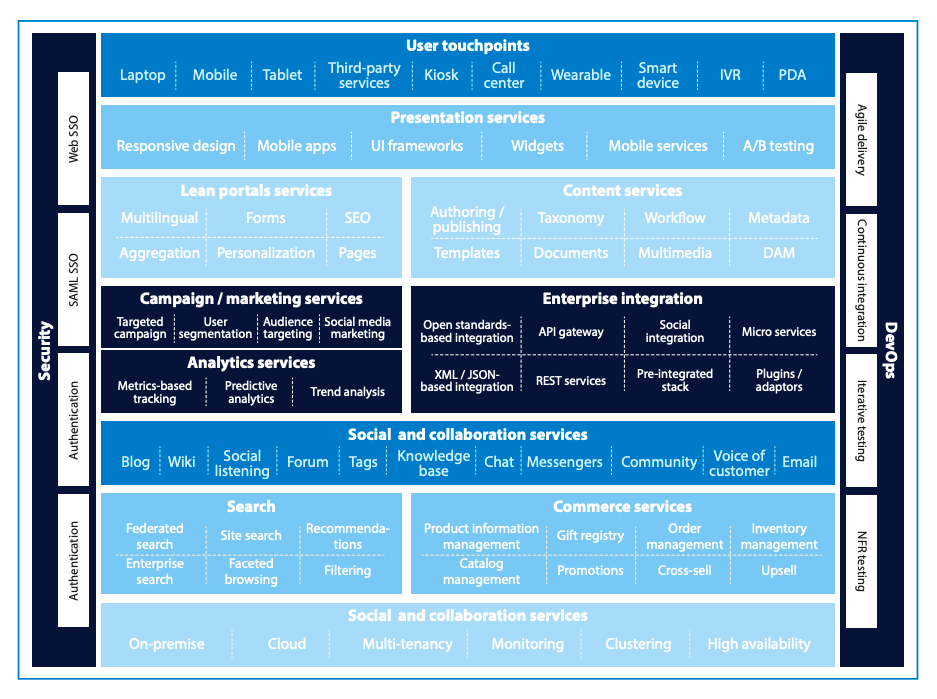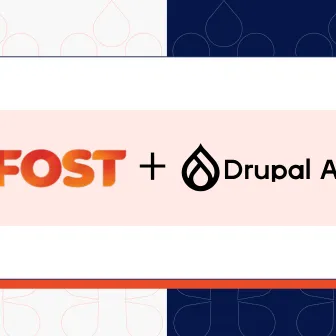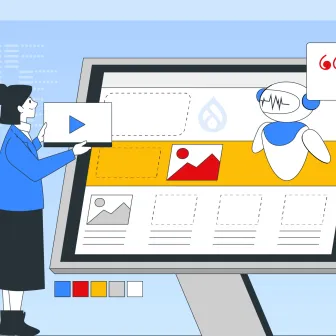Digital experiences have become an integral part of everyone’s life today. Be it the provider of the experience, being the businesses or the receiver of those experiences, which would be the users; both benefit a great deal from a sound and seamless digital experience.
For the business to provide an impressive digital experience and the user to enjoy it, a DXP or a Digital Experience Platform is somewhat necessary. Through the software’s management of multiple channels, devices and every user touchpoint, it is able to provide personalised user experiences. Its forte is its ability to converge multiple technologies to provide the best possible experience to the user, making their journey a memorable one. With the use of the latest technology, the people building the experience are also pretty gleeful since they get to explore whatever is new.
So, if I had to define a DXP, I’d say it is a platform that is equipped to handle and deliver all the digital experiences of an organisation and perpetually work towards enhancing them. And if I had to mention DXP’s formal definition, I would quote Gartner.
A DXP is an integrated set of core technologies that support the composition, management, delivery and optimization of contextualized digital experiences.
In this blog, we’ll be talking about these Digital Experience Platforms and all that they come equipped with, however, we’ll be focusing on a particular category, which is open source DXPs. Before I get into that it would be more appropriate to compare open source DXPs to their counterparts, which would be proprietary. Let’s get started.
Open Source DXP in Comparison with Proprietary DXP

Based on the above image, you can clearly see that a DXP encompasses every aspect of the digital experience that an organisation may want to be taken care of.
From user touchpoints to targeted campaigns;
From content services to social services;
From commerce to searches;
DXPs are pretty versatile in their offerings.
Now that we have a basic understanding of what a DXP is and what it does, let’s look at two of its major classifications, being open source and proprietary software.
In essence, the difference between open and closed source software lies in the ownership. Open source by definition means a platform that is open to everyone, everyone can use it and anyone can contribute to it and there are no restrictions in the form of licencing fees or other charges. On the contrary, proprietary software, or DXP in our case, would be closed in plain terms. It’s a software that would be used by people who pay for it and the majority of the development comes through the proprietor himself.
Talking in terms of DXP, there are three main differences between an open source and a proprietary DXP apart from the licensing fees and charges. Let’s look at them.
| Parameter | Open Source DXP | Closed DXP |
| Licensing fees | Not required, it is free to use | Mandatory |
| Choice | Abundance of choices; you can pick and choose the features you want to use | The choices are limited; you have to use the DXP in areas that were already optimised |
| Integrations | Integrates seamlessly with other software | Integrations are minimal |
| Growth | Has a faster growth rate due to heightened flexibility | Fast, but not as fast as the open source |
Open VS Closed Choice
The first major difference between these two categories is the level of choice they offer. If I talk about the open source DXP, the choices are plenty. You’d never be locked inside the software. You do not even have to use the entirety of the software, you can simply select the aspects which require improvements and leave the rest. There is also the option of customisation, you can build on top of the DXP you are using without anyone questioning you. You could use it for one of these or all of them.
Web content management;
Web personalisation;
Data and analytics;
Marketing automation.
Now taking the closed DXP into consideration the choice is pretty limited. You choose a closed vendor and you are locked inside of their software. There isn’t much or even leeway to explore outside that locked space. You are all in.
Open VS Closed Integrations
Next difference is in regards to the integrations. An open source DXP can also be described as a combination of multiple products provided by multiple vendors. Using a DXP like Drupal, which is open source, you can integrate your digital experience with a platform like SalesForce with ease.
For the closed DXP, the story is a little different as the integrations are pretty limited as it is a one stop destination. You will find the majority of the services a DXP can provide, but they’ll be from that one vendor only.
A closed DXP is like one single brand, wherein you’ll find the products and services of that brand only, while the open source is like a supermarket, wherein you can find the products of almost all the major brands.
Open VS Closed Growth
Finally, the open and closed DXP’s growth also paces at different rates. This is because of the kind of flexibility and contributions they have respectively.
The open source DXP would be immensely flexible because of its open foundation. This means that it’ll always be open for adaptation as per the changing market requirements and its growth seamless and quick. Add to this the fact that there is an entire community to contribute and make necessary improvements into the software.
In comparison, the closed DXPs also continually evolve. There are certainly improvements made to the software. However, because it's not open, its level of flexibility isn’t as high as its counterpart. Perhaps that is why the open source software DXP is making strides in the closed spaces as an alternative to them.
Why should you choose Open Source DXP?
So, you know that an open DXP is quite different from a closed one. Since you can only choose one of them for your organisation’s digital presence and consumer experience, you will have to pick one. Based on the previous section, I am sure you would have come closer to a decision. To make it even easier, let me tell you about all the benefits of an open source DXP.
Open Source is malleable to the future
The only thing we can say for certain about the future is the fact that it is uncertain and that there is high plausibility of change. Future cannot be predicted, so we should not even try. However, what we can do is make ourselves malleable enough to adapt to whatever the future might hold.
And that is what open source DXP entails with its API-first infrastructure that has the ability to integrate with the future. Of course, by future I mean the tools and frameworks that would reign in the future. Open DXP’s technology stack is indeed ready for the future because it is always ready to adapt.
An open source DXP’s malleability also helps in improving consumer experience. This is because it makes it easy for businesses to create solutions in accordance with the changing consumer needs. The said solution would provide the most optimal results if it is created with speed and here the open architecture comes extremely handy.
Finally, with open source DXP you have the power to eliminate and replace certain parts of the platform that either do not align with your strategy or are hindering your growth. This makes it highly efficient in the worst of times. To know more, read about the impact of open source in Covid-19, how open source remains recession-free and why large enterprises are leaning towards open source.
Open source lets you innovate to your heart’s desire
Collaboration;
Partnership;
Shared goals;
United ambitions;
All of these mean mutual success, all of these mean more power for better innovations and all of that is what open source stands for. Open source is where innovation thrives. Let’s understand the why.
Have you heard of JAMstack? It stands for JavaScript, APIs and Markup. Back in 2018, it made quite a noise in the realm of marketing site theming. Ever since then it has become the go-to design stack for developers. This stack of modern technologies gives the developer the room to innovate and spurs them on constantly, the results enhanced developer velocity. It creates just the right environment with its new tools and quickness for more innovation.
If I were to talk in plain terms, I'd say that because open source does not confine the developers with one vendor and only its resources, there is a lot of freedom to innovate. It creates an open culture that allows the people in it to build as much as they want individually and with partnerships through the open connections of open source.
Open source elevates consumer experiences
Today consumers do not have just one single touchpoint with the business. They can connect to it through mobile applications, IoT, voice assistants and even chatbots. And the consumer expects context awareness in all of these. So, what is the solution?
With an open DXP, you can deliver content that is created by content authors without special emphasis on the channel it’ll be used on. This sounds bad, but it, in fact, is a good thing as it allows content creators and front-end developers to create pieces that are aligned with the target audience’s needs.
Once a piece of content is created, it can be repurposed for the platform and its context can also be altered and further delivered across various channels. This eases the complexity of working with an open framework and makes content quite composable. Moreover, the open APIs make the centralisation of content consistent throughout the channels and devices.
The result is a holistic consumer experience that has the consumer in control of his interaction with you.
Open source empowers consumer data
Every time a consumer interacts with you, he leaves some information behind. It’s like meeting someone in real life, with every encounter you will get to know the person more and not the other way around, you can’t be asking the person to introduce themselves every time you meet, that’ll be rude on so many levels. Yet this is what happens when your digital presence has consumer data that is scattered in various departments in data silos that are often inaccessible.
An open source DXP comes equipped with an open Customer Data Platform, which would help you capitalise on the consumer information you already have with you. Consumer data from e-commerce, from customer support systems and CRMs gets accumulated and organised at one place, so that you can actually utilise the information you have about your consumers. These consumer insights are immensely helpful in building forward and an open DXP helps in that.
Open source has room for microservices
Imagine a suite of lightweight mechanisms like an HTTP resource API that would be responsible for running many small services within an organisation as one single application. This is called a microservices architecture and it is provided by the open source DXP.
You might think what is the point?
The points are three benefits you will get from this architecture.
- You’ll get a better handle on your technology solutions;
- You’ll be able to enhance your productivity because of that;
- And you’ll also be able to achieve better scalability as the architecture will fit perfectly to your long term organisational goals.
Open source caters to commerce needs
For the gazillionth time, because an open source DXP is open, it can better cater to your commerce needs. Let’s understand this with a comparison to its closed counterpart.
A closed DXP would have an already established, integrated and rigid commerce platform that you cannot mess with, while an open source DXP could integrate itself with any commerce platform that you want based on your needs.
So, when the need to add a commerce capability to your digital platform arises, which it will, you would be glad to have chosen an open source DXP. This is because open source is never tightly coupled, so, you wouldn't have to compromise and adjust to the rigidness of a particular platform, rather you can stand your ground on your needs and capitalise on the platform that aligns with your needs.
Open source offers better security
Security breaches and data leaks are far too common for anyone’s liking. And when you consider a software that is open to everyone, the threat of these security attacks should be all the more obvious, right? Wrong.
Open source DXPs are far more secure than closed DXPs and the only reason for that is their openness. With an open DXP, you would always be aware of the vulnerabilities and can take action to improve on it, while a closed DXP, being a proprietary software would consider not telling about those vulnerabilities merely because it’d lose money. You decide, which is better?
Open source saves money
When you choose an open source DXP, you choose to save money. This is because of two reasons.
One is because it acts as central management tool that helps you manage multisite as well as give you flexibility, security, control and efficiency it needs. Once you get that, there would be minimal chances of duplicacy of resources, be it in IT or marketing. And that is going to be a worthy investment.
Secondly, an open source solution is a combination of microservices and SaaS, which essentially translates to you paying for only the services you choose and not a penny more.
How does Drupal fair as an Open DXP?
We know what a digital experience platform is, we also know what an open source digital experience platform is, now we’ll talk about a particular DXP that is open source and its Drupal. Having worked with Drupal myself, I can say for sure that it is up there in the list of most impressive DXPs and being a fan, I have to talk about it.
An open source platform that has been around for two decades and is still running strong, Drupal is meant to create the most amazing digital experiences and the support and contributions of its vast community makes that a possibility every day.
If I had to compare Drupal to the benefits of open source DXP that we discussed in the previous section, I’d say that it fairs pretty well. Drupal as an open source DXP is always to work. Let’s see why.
API-first build
The best part about Drupal as an open DXP is its API-first architecture. This makes the creation of multi-channel experiences quite fulfilling. With an API-first approach, Drupal can decouple itself and provide room for new technologies like Vue, React and Angular. You will have the option of selecting the best-in-class products to integrate and build your digital infrastructure, adding the freedom of innovation for your developers.
Extensible
Drupal can very easily accommodate your needs and goals and that is what makes it extensible. You can have a small organisation or a global one, Drupal will be able to help you architect your digital presence the way you want, build it and expand it until you keep growing.
Drupal’s modular architecture makes it all the more extensible. With upgrades being equivalent to installing a new module, building and improving a Drupal site’s digital experience is never going to be a mountainous task.
Then there is the fact that Drupal, as an open source, allows customisation. You can very easily build your own DXP on top of Drupal. There are umpteen open source DXP vendors, who have actually done that.
Community
Drupal has a community of over a million and growing. With that many Drupalists in the world, you can be assured that there would be an answer to any Drupal conundrum you may be stuck in. Upon raising an issue, you can always expect the Drupal veterans and contributors to respond and help you out. The contributions from the Drupalist not only make Drupal a successful DXP, but also ensure that it is reliable.
Here is a video that will help you understand the role of Drupal as an open source DXP.
Nobody can deny that Drupal is a powerful DXP, however, denying that it doesn’t have any flaw would be unfair too.
- Certain advanced features like creating customer profiles or building a neural network become a difficult task;
- A/B testing and introducing personalisation is also something Drupal isn’t renowned for;
- CDP, an important practical capability for a DXP is one that is missing from the DXP.
I wouldn’t say that these features make Drupal unworthy or hard to work with, not in the least. However, they are something that need to be mentioned.
Conclusion
Having a digital presence has become pivotal today. However, having a digital presence that does not leave its mark on your consumer is as good as not having one. A DXP is what will help you leave that mark and lure your target audience towards you. And if that DXP is open source that mark would be all the more deeper and you’ll be all the more delighted because of it and I am pretty sure you’d like that.
Subscribe
Related Blogs
Inside the Drupal AI Summit: Themes, Speaker and What To Expect

“ The web is changing fast, and AI is rewriting the rules. It writes content, builds pages, and answers questions directly,…
FOST and Drupal AI Initiative: Next Era of Responsible AI

Three years after the launch of generative AI tools marked a new age for artificial intelligence, almost 90% of survey…
Drupal AI Ecosystem Part 5: AI Content Suggestions

Drupal has steadily evolved from being just a content management system into a flexible platform that incorporates emerging…




